#self study in hindi
Explore tagged Tumblr posts
Text

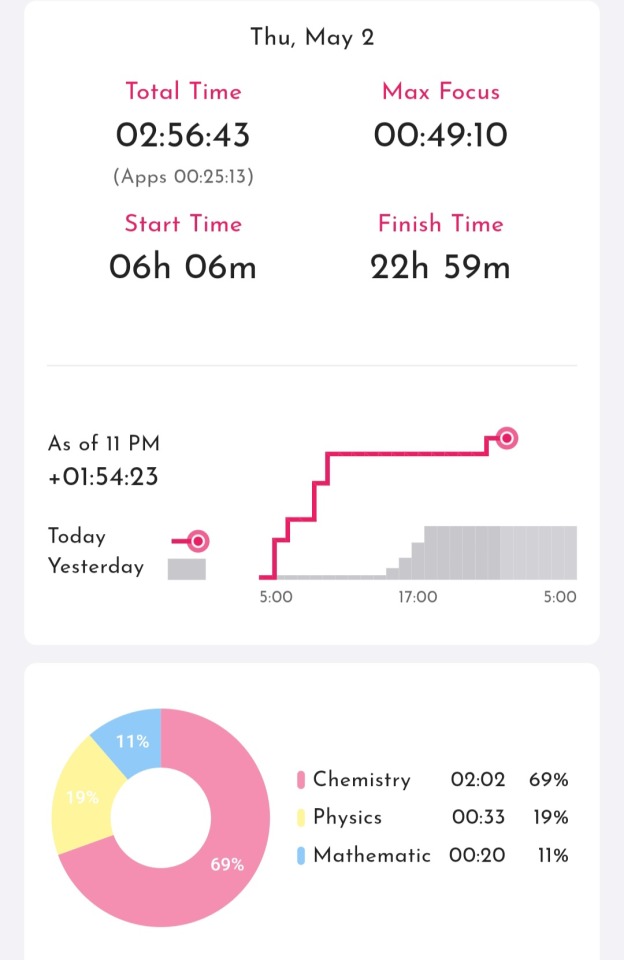
✎ᝰ 2/5/2024 (Thursday) ˎˊ˗
Today was truly a day of productivity as I completed 1 full chapter of Physics, and I was finally able to start Maths, still having troubles on the Chemistry part but it's getting better!!!
.
From now on, I'll also be writing down what I have completed on each subject for the day, particularly Chemistry, Physics and Maths (+ English and Computer Science later on as school starts) and maybe even Spanish and Hindi too!
.
Chemistry: Completed 1 topic (+ 5 sub-topics) along with 6 example problems (which I spent a long time understanding)
Physics: Chapter-2 (All)
Mathematics: Intro to Chapter-1, and I solved about half of the 1st exercise
Overall Time Studied: 2hrs 56mins
Self-rating: 4/5 (Pretty proud with myself as i managed my time quite well, both for my studies and leisure time)
ᯓ ᡣ𐭩
65 notes
·
View notes
Text
Hello!
I'm Alexandra, you can call me Alex/Sasha.
I am an ISC STEM student!
I'm 15, studying in Year 11, from India
My subjects: Science with Maths, English
Main purpose of having a studyblr? Self motivation.
INTJ
Languages I speak: Bangla, Hindi, English, Spanish, a little bit of Irish Gaelic
Tryna get stuff done without burning myself out.
I'm your typical Pinterest girl, and I hope my Studyblr motivates you to study and become the best version of yourself as well!


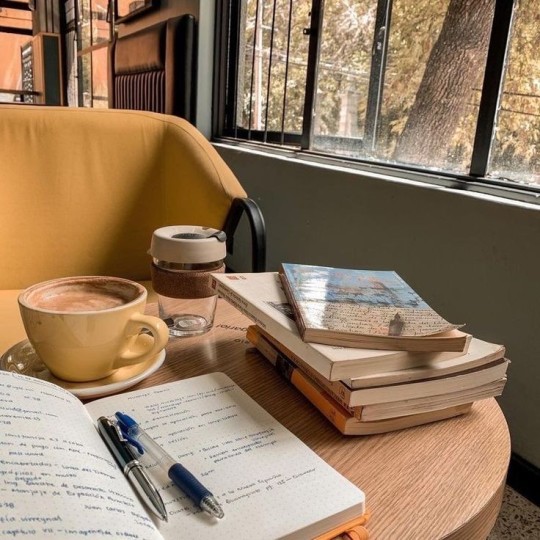
#study aesthetic#study blog#study motivation#studyblr#studyspo#productivity#study notes#study abroad#study hard#study space#hello tumblr#hi guys#studybrl#pinterest
125 notes
·
View notes
Note
PLEASSEEE TELL US ABOUT YOUR MYTHIC MUMBATTAN AU PLEASE PLEASEE



>:) very well, my people (currently screaming because i wrote a response but i accidentally CTRL+Zd everything out of existence lmao)

The Mythic Mumbattan AU is me pouring the following ingredients into an explosive mess:
Hindu mythology and Indian culture overload
college!Spider-Man shenanigans
revamping the original Spider-Man: India plotlines and expanding the lore
character studies!!! my favourite :)
a potential and self-indulgent crossover with another indian superhero (if we ever get there)
the horrors.
Pavitr and his personal cast!!! just!!!! THEY!!!!!!
(keep reading if you want more goodies >:D)
So the CoffeeBean is a coffeeshop that existed in the mainstream Marvel universe and in real life but that's another thing; the cast below frequently drop by to hang out with one another. The Mumbattan-equivalent of the CoffeeBean is actually the TeaHouse which is another real life thing but shh and so in-universe they're called the TeaHouse gang, but in my heart they'll always be the CBG 😌
Everyone goes to Brihanmumbai State University (BSU). Lots of crazy things happen here. Pavitr's relationship with the others is always in flux but ultimately they're super close with one another (fuck it, they might as well be poly). Their personalities I try to keep as close as I can to the mainstream universe E616 comics, but I'm being creative and letting a few things from the SMI comics and ATSV influence them:
Pavitr Prabhakar — Tamilar (Tamil); he has the charm and skills from his ATSV counterpart and the smarts from his SMI counterpart; he can be a bit of a jerk and a flake, but he tries to be a good friend, and is much more open than he was in high school.
Meera Jain — Kannadiga (Kannada); basically how I've written her in tibim: everyone's first impression of her is that she's carefree and seems to not worry too much about life. She secretly deals with a lot of self-doubt and personal fears, but the gang's presence is enough for her to push them aside.
Gayatri Singh — Gujarati (Gujarati); she's probably the most quiet of the gang, but undeniably the kindest. She's more similar to Pavitr, in that she's stubborn and quick to judge. She's the glue of the gang and always willing to extend a hand to others
Hari Oberoi — Maharashtrian (Gujarati/Marathi/Hindi); the son of the man who tried to bring literal hell to earth, but other than that he's okay. He's a people-pleaser despite having everything, and struggles with his own self-image and who he should become
Ekansh "Flash" Travasso — Goan (Marathi); the high school jock who's grown more understanding and compassionate. He knew Pavitr the longest, so they have quite an interesting collection of interactions. (ALSO I'M SO SORRY I WROTE THOMPSON IN THE ART POST INSTEAD OF TRAVASSO 😭 maybe i should go back and edit that)
Spider-Man is Spider-Man'ing. Mumbattan loves him (sort of. Inspector Singh has mixed feelings). But another question: why is that every where Spider-Man goes the demons of yore all start showing up and begin wrecking havoc? Why is that? I am taking the magic in Spider-Man: India and dialing it up to five million — horrors and magic of every kind! I can get my hands real dirty and /really/ push Pavitr to his limit >:)
That is all for now. There will be more characters, but they'll show up in time. Lots of stories too, all old and new and revamped and crazy, but they'll be told when they're ready. Perhaps this is enough to satiate everyone's hunger? (unless you want to know something else, then by all means go ahead and ask!!!)
#sorry this took so long i was procrastinating#and then all my words disappeared and i had to physically go and touch grass. sometimes technology and i don't mix#but anyway#mythic mumbattan au#my beloved#i am soooooo insane about these guys. you have no idea#me waiting for all the words to come pouring out of my brain ykykyk#coffee bean gang#spider man#pavitr prabhakar#gayatri singh#meera jain#hari oberoi#flash travasso#spider man india#agni of wisdom#agnirambles
172 notes
·
View notes
Text
Kaya's Studyblr
After alot of thoughts , I came to the conclusion of being a part of studyblr....
I want to track my academic progress , and even have the necessary dopamine and motivation to study consistently....


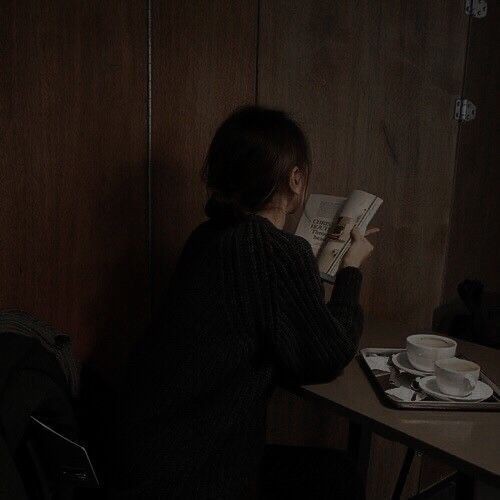
If you landed at this blog , just know I am a sixteen year old girl who's chasing the moon , stars , her dreams and the infinity....
I am a medical aspirant
My subjects include Physics , Chemistry , Zoology and Botany....
I am also an aspiring writer with writing poetry being an escape from this cruel world....
I have a keen love for writing , reading , and listening music....
Few of my favourite writers include Rumi , Kafka , Amish , Yuval Noah Harari , Rhonda Byrne , Rupi Kaur , and Paulo Coelho
I read all kinds books from historical fictions to contemporary romances.... According to me reading books should not be narrowed down to a peculiar genre instead I am a diverse reader....
I incline towards reading autobiographies and self help books....
My target is to read a total of 200+ books this year with 50 being already completed
I want to maintain a proper study routine and track my progress....
My aesthetics include Dark Academia
I am also a classical dancer and singer so in a nutshell art is my solace
Listening to music is also one of my favourite things to do although I mostly listen to it alongside studying....
A hard-core coffee addict and a selenophile

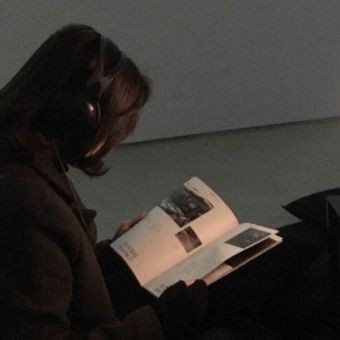
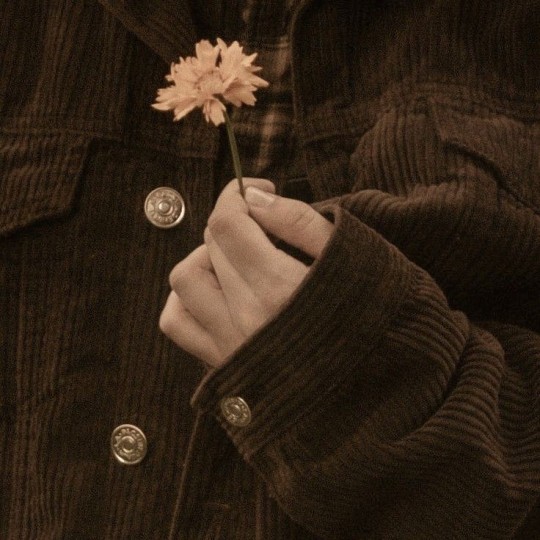
I am open to study tips and finding great people all along the way....
I believe when we help each other out things become more easy
There's already enough hate in the world so let's altogether spread love , happiness and kindness
Vivamus Moriendum Est
I know how to speak 2 Major languages both of them being English and Hindi , I can also speak German and Sanskrit in bits
I want to learn how to speak and write - Greek and Latin
My goal is to learn how to speak 7 language in my entire life....
The goal is to be disgustingly Over educated



Pic credits to respective owners
#desi aesthetic#desi people#desi tag#desi tumblr#desi academia#desi shit posting#desi teen#desi core#desi thoughts#indian tumblr#study motivation#study blog#study aesthetic#study notes#studying#student#student life#studyblr#studyspo#medical student#dark academia#light academia#Studyblr#spilled ink#spilled poetry#spilled thoughts#spilled words#spilled truth#spilled feelings#spilled writing
43 notes
·
View notes
Text
Some General Marauders Era Headcanons
NOT canon compliant (I don’t care about jk shitface’s canon lol)
Regulus Black (the main character as far as I’m concerned)
~ French, I mean cmon the Black family motto is toujours pur for gods sake. He absolutely speaks French. Other than that, they can be traced to German (Walburga’s side) and English heritage.
~cis bi boy (sapiosexual?)
~ c-ptsd, depression
~ messy curly medium-length hair, long nimble fingers, one of those people with a few lovely moles in choice locations, slutty waist, angular jaw, kind of set in eyes, not tall but a bit taller than Sirius
~ most dogs freak him out (lol oof)
Sirius Black
~ french (& English, German) ofc.
~ amab queer, omnisexual mlm
~c-ptsd, adhd
~ wavy long black hair, also a slutty waist, not very tall, squinty eyes, latently a little muscular
~ big believer in a leather jacket
James Potter
~ I stan desi Potter. But also love the idea of Euphemia being Greek per her name so Jamie boy is part Greek and part Pakistani on Fleamont’s side. He only speaks English but has some terms and things from both Greek and Hindi.
~ cis bi guy
~adhd
~ needs glasses ofc, I imagine he’s super nearsighted.
~ super messy hair, lean and muscular, medium tall
~ red converse wearer
Remus Lupin
~ Welsh, English, and Portuguese. He speaks only English.
~ amab, queer, demisexual?
~ anxiety
~ chronic pain from wolf injuries
~ scarred all over, light brown hair, tan, he’s the tallest, skinny but not lacking muscle, limps sometimes and often needs to stretch his sore muscles, hairy!!
~ always wearing a sweater
Peter Pettigrew
~ English & German. Speaks English.
~ cis, bi
~ anxiety, definitely does self-soothing movements
~ fat !! no skinny wormtail in this house, wavy blonde hair, the cutest cheeks known to man, callouses on his hands and no one can figure out why
~ asthma
~ loves naps
Pandora Rosier
~ Another family who absolutely must be fluent French speakers. So I think they have some Afro-Caribbean on one side and the other is very much originally French. Speaks English and French.
~ cis fem, pansexual, demiromantic
~ autistic
~ hair is super light blonde and looooong in dreads, light blue eyes, brown skin, quite tall and thin, all her features are super delicate and lithe, she’s kind of otherworldly tbh but she certainly doesn’t act so she’s got quite the mad scientist competitive streak
~ amazing at charms
Evan Rosier
~ Afro-Caribbean, French, English. Speaks English and French.
~ he/they, omnisexual (and by that I mean he fucks everyone ha-hey)
~ super light blonde hair either cropped or in a protective style, brown skin, light brown eyes, braces, dead average build, but still suave af don’t be mistaken everyone wants this kid, not hairy
Lily Evans
~ English and Scottish, speaks English.
~ cis gal, questioning but likely demisexual
~ fat!!, straight-ish red hair ofc, freckles, green eyes, cute small chubby hands, radiant smile
Barty Crouch Jr.
~ English, speaks English and all curse words in every language he could get people to teach them in.
~ queer amab bisexual
~ I won’t begin to try to dissect the workings of Barry’s brain but depression could be a start
~ eidetic memory
~ needs reading glasses? but like most of the time they’re not on him or they’re broken. so he just like uses his crazy big brain to just remember stuff or else he mostly never reads outside of studying times
~ brown hair but whenever he gets the chance he buzzes or dyes it green for fun, stick and pokes and self done piercings, tall but not Remus tall, lean muscular, hairy ass legs
Dorcas Meadowes
~ Ethiopian and English. Speaks English.
~ cis girl, sapphic
~ dark skin, black hair often in long braids, dark eyes, athletic curvy build, long fingers
~ literally prodigy herbologist, also amazing at potions and divination
Marlene McKinnon
~ Filipino!!!!!!!!!!!! speaks English and Filipino (maybe some of another regional language of the Philippines).
~ cis girl, sapphic
~ adhd, depression
~ lactose intolerant
~ short queen, freckles, dyed blonde but def experiments with color and cut, usually straight or a little wavy, muscular but it doesn’t really show she just seems kinda thin, some stick and pokes, several ear piercings
~ wears red cowboy boots, studded belts, low rise, cut up t shirts, hats
Mary Macdonald
~ Brazilian on one side and South African & English on the other. Speaks English and Portuguese.
~ cis girl, bisexual
~ ehler’s danlos syndrome
~ wears her dark hair natural curly, curvy, average height, belly button pierced, huge gorgeous smile, adorable button nose
lol
Severus Snape
~English and Polish. Speaks English.
~ cis, hetero
~ depression, anxiety
~ straight long black hair, pale, Remus tall, fairly average weight, dark eyes, strong nose
~wears mostly black
~ amazing at potions
#marauders#regulus black#sirius black#remus lupin#james potter#lily evans#peter pettigrew#marlene mckinnon#mary macdonald#barty crouch jr#evan rosier#pandora rosier#severus snape#dorcas meadowes#myreggie
35 notes
·
View notes
Text
DAY 5605
Jalsa, Mumbai June 22, 2023 Thu 11:25 PM
🪔 .. June 23 .. birthday greetings to Ef Anish Morarji Tataria .. yo from your Ef Family 😁✌🏽 ..
And .. to dear Ef Moses Sapir .. your wedding anniversary on June 23 .. our good wishes always ..
Birthday - EF - Anish Morarji Tataria Friday, 23 June .. and our wishes for this special day of yours .. love from the Ef family ..
Does it dawn .. dawn in the recognised morn of the day .. the day doth announce its presence .. or about its presence .. and the World of writing and writers hurriedly adopts the ‘dawn’ to their world ..
‘ it be the dawn of a new world’ .. they say .. or words to that effect .. effective , poetic and composite .. whether the dawn turns to the sun lit day or not irrespective .. or sets into another quiet unknown night for another dawn to re appear ..
amusingly , when the film ‘DON’ was announced with me .. many in the world of Hindi cinema were quite unaware of the word don ..
what they were familiar with was a product known as DAWN .. the DAWN banyaan .. vests ..
And the market was very skeptical and annoyed with the makers as to why a film title should be about undergarments .. !!
many still are .. 🤣
... but on another note .. Ef remembers Babuji and his translated auto biography and puts it all down .. I feel it deserves mention here :
And .. before Music Day ends .. I feel having the honor of sharing few words from Babuji about his journey with music from his autobiography .. but , then , indeed , every day is music day .. love .. ❤️🙏🏻
Quoting babuji : 🙏🏻
“ [...] ..
Pratap Narayan [my Father] was duly betrothed to the daughter of Munshi Ishwari Prasad, a resident of Katra Mohalla in Allahabad. Her name was Sursati, and she was to become my Mother. The name 'Sursati' is clearly derived from 'Saraswati', and when I felt the first stirrings of a desire to be a poet or writer, I derived much self-confidence from the fact that I was the son of the goddess of learning and of art and music.
[And in mentioning music] ..
Professor Khushhalkar, was our music teacher, he was a Maharashtrian and a pupil of Pandit V.D. Pulaskar. His Hindi was of the Bombay variety, but when he taught us devotional songs, his pronunciation of every syllable was crystal-clear; he would make us do voice practice to the harmonium, then teach us bhajans such as Tulsi's Gaiye Ganapati Jagabandara, which I can still sing from memory today. He also showed us how to sing while picking out the notes on the harmonium: he would pump the bellows with one hand while the fingers of the other would run lightly over the keys, his own voice blending with that of the instrument in such a way as to achieve a sublime harmony of the inanimate with the animate: evoking a tingling emotional response. Professor Khushhalkar sowed the seeds of music in me, but regrettably I was never able to grow the plant that should have sprung from them. Still, my slight study of music was helpful in the reciting of poetry, and a little knowledge of tala helped me compose songs in the folk genre. I can also tap out a rhythm on a drum, but that was learnt from my mother and sisters. ” ~
Dr. Harivansh Rai Bachchan's Autobiography: In The Afternoon Of Time .. Chapter: Things to Forget, Things to Remember .. Pages: 56, 112 ..
.. and in time .. hopefully there shall an introduction to the music that this untrained novice who has had no musical training at all .. just been in the company of listening and present to the sounds of music that has remained with me .. and the legacy of Babuji , if nothing else shall prevail .. yet again ..
In quiet love and affection to the Ef ..

Amitabh Bachchan
127 notes
·
View notes
Text



( 🍂 ) . . . — IVY JENNIFER JAMES , better known as IVY, is a korean-australian artist under BIGHIT ENTERTAINMENT. she's the only female soloist of HYBE Labels.
( 🪷 ) . . . — BASICS !
BIRTH NAME : Ivy Jennifer James
KOREAN NAME : Kang Jihye ( hangul: 강지혜 )
NICKNAMES : i ( pronounced eye ), marie, vy ( pronounced like the letter v ), Jen, jenjen, jenny, angel, nation's sweetheart
BIRTHDAY : 3 march, 2000
BIRTH PLACE : newcastle, australia
ZODIAC SIGN : pisces
NATIONALITY : australian
ETHNICITY : korean
FAMILY : parents ( 1980 ), one older brother ( 1999 ), twin sister, younger twin siblings ( 2015 )
LANGUAGES : Korean, English (fluent) ; Japanese, mandarin (conversational) ; French, Greek (beginner) ; hindi, filipino, thai (learning)
( 🌠 ) . . . — BODY !
HEIGHT : 174 cm (5’7″)
BLOOD TYPE : B+
BODY MODIFICATION : seven piercings on both ears, nine tattoos on her body.
FACE CLAIM : huh yunjin ( le sserafim )
( 🪼 ) . . . — PERSONALITY !
STRENGTHS : kind, empathetic, funny, considering, dedication
FLAWS : overthinking, short temper, anxiety, self doubt, perfectionist
( 🪸 ) . . . — MEMBER'S INFO. !
STAGE NAME : IVY
AGENCIES : bighit Entertainment ( 2011 - 2023 ) ; enca labels ( 2023 - present )
TRAINING PERIOD : 2 years and 8 months
DEBUT DATE : 20 August 2014
OCCUPATION(S) : singer, dancer, model, actress, composer, lyricist, producer
FANDOM : soleil(s)
REPRESENTATIVE EMOJI : 🫧
( 🪐 ) . . . — MISC. INFO !
dramas : the bride of haebak, hotel del'luna, welcome to waikiki 2, 18 again, true beauty, vincenzo, so not worth it, hometown cha cha cha, business proposal, sh**ting star, dr romantic 2&3, king the land.
twitter : ivy_official / poison_ivy
private twitter : prodby.jen
instagram : ivy.official / poison.ivy
youtube : ivy official / poisonivy
( 🪻 ) . . . — MISC. TRIVIA !
ivy has always been interested in studies and has been a straight a student her whole life and when asked what she'd do when she'll retire from the industry, she said she'll like to get back to school!
in 2020, it was announced that ivy and txt member yeonjun were dating and the news shook the whole industry. because the couple made it seem like they were just friends!
ivy's bffs in the industry who always have her back include inka from skz, lua from ateez, haewon from mask, eris and many more idols who she absolutely loves and would give them the world for them.
she is thick as thiefs with the rest of txt and absolutely vibes with beomgyu. her, taehyun and ruby are gym buddies and often have competitions to see who has the bigger muscles and stuff.
she has a twin sister and an older brother whom she absolutel loves and would die for. and a few years ago, the james family welcomed their new addition to the family! twin siblings lily and nathen!! the twins are about seven years now and are adored by everyone.
while her korean name used to be the same as her stage name, she officially changed it summer of 2021 to kang jihye to honor her late grandmother who always wanted her to have that name.
the death of her grandma had taken a toll on her physical and mental health and she had to be on medical attention for a few months because of her depression and anorexia problems.
eversince that incident and her hiatus, she has been pretty vocal about her struggles with body image issues and her ed. she has been a spokesperson for the said reasons ever since!

# ⋆⠀⠀ʬ.ʬ.⠀⠀٬⠀⠀(⠀⠀&.⠀⠀)⠀...⠀profile.#huh yunjin#kpop fluff#kpop imagines#kpop oc#kpop soloist#huh yunjin x reader#yunjin fluff#yunjin imagines#yunjin huh#yunjin#jennifer huh#fictional idol oc#fictional idol community#fictional kpop oc#fictional idol group#fictional kpop community#kpopidol#kpop fanfic#kpop girls#kpop icons#kpop#kpop incorrect quotes#kpop moodboard#kpop layouts#kpop gg
104 notes
·
View notes
Text
𝓱𝓪𝓻𝓻𝓲𝓮𝓽 “𝓱𝓪𝓻𝓻𝓲” 𝓬𝓱𝓪𝓭𝓱𝓪 !




˚✧ ₊˚ʚ THE BASICS !
— ❥ FULL NAME: Harriet Chadha.
— ❥ NICKNAMES: Harri (most commonly used), Princess, Elle Woods, Molly Ringwald (by close friends only), beta, priy, ulloo (by family only), Sissy (by Luke only), babe, baby (by Jack only), pretty girl (by Jack only).
— ❥ DATE OF BIRTH: February 9th, 2003 (Aquarius).
— ❥ BIRTHPLACE: Dearborn, Michigan, United States.
— ❥ CURRENT RESIDENCE: Ann Arbor, Michigan, United States.
— ❥ SPOKEN LANGUAGES: English, Hindi (not fluently), Spanish (not fluently), French (not fluently).
— ❥ ORIENTATION: Panromantic, pansexual.
— ❥ GENDER IDENTITY: Cisgender female (she/her pronouns).
— ❥ OCCUPATION: University history student.
— ❥ FACECLAIM: Avantika Vandanapu.
˚✧ ₊˚ʚ PERSONALITY !
— ❥ HOGWARTS HOUSE: Ravenclaw (intelligent, creative, wise).
— ❥ MYERS-BRIGGS TYPE: ISFJ - The Defender (observant, reliable, humble).
— ❥ ENNEAGRAM TYPE: Type Three - The Achiever (charming, self-assured, authentic).
— ❥ MORAL ALIGNMENT: Lawful Good.
— ❥ LOVE LANGUAGES: Physical touch for giving and receiving.
— ❥ SKILLS: Photographic memory, speed reading, calligraphy, skilled at studying, people skills, makeup, hair styling, switching quickly between languages, outfit coordination, cooking.
— ❥ LIKES: Getting good grades, looking good, surprising people with her intellect, dancing around her dorm room, going to parties with her friends, finishing an assignment knowing that she did her best on it, getting her eyeliner exactly right on the first try, well-made chai, spending quality time with her loved ones.
— ❥ DISLIKES: Boring people, people assuming she’s stupid just because she’s pretty and enjoys looking cute, black coffee, getting a lower grade than she feels she deserves, sour candy, fake people.
— ❥ FEARS/PHOBIAS: Failure, disappointing the people she loves, blood, great heights, falling down a flight of stairs.
˚✧ ₊˚ʚ RELATIONSHIPS !
— ❥ FAMILY: Chandrika Chadha (mother), Kamal Chadha (father), Ashish Chadha (older brother), Kapil Chadha (older brother), Pavarti Chadha (older sister).
— ❥ FRIENDS: Luke Hughes, Daisy Ahn, Matty Beniers, Dawson Mercer, Luca Fantilli, Timo Meier, Matthew Knies, Ethan Edwards.
— ❥ ACQUAINTANCES: Rutger McGoarty, remainder of the UMich hockey roster, remainder of the New Jersey Devils roster, Quinn Hughes, Trevor Zegras, Cole Caufield, Nick Suzuki, Artūrs Šilovs.
— ❥ ROMANTIC INTERESTS: Ravi Kaur (first crush), Henry Butler (first boyfriend), Carla Ragetti (summer fling), Vaughn Harlowe (ex-boyfriend), Peter Mount (brief fling), Alex Jacobsen (ex-partner), Matthew Knies (brief crush), Ethan Edwards (brief fling), Jack Hughes (current romantic interest).
˚✧ ₊˚ʚ FUN FACTS !
— ❥ Although Harri despises being her nickname after Elle Woods and the comparisons always being drawn between her and the character, she does actually love the character herself, as well as the Legally Blonde movie and musical both. She can often be heard humming the song “Chip on Your Shoulder” while studying, and about half the musical soundtrack is in her Liked Songs on Spotify.
— ❥ As much as she really does love her family and siblings, Luke is, at the end of the day, her favourite person in the world. They just understand each other on a level no one else understands either of them, and they have an amazing bond.
— ❥ Harri has a fear of drowning, and it can even sometimes prevent her from going swimming at all, though not always. Nobody in her family is quite sure where the fear comes from, because she’s never actually had any bad experiences with water, but it’s there nonetheless.
— ❥ She’s slept with Ethan Edwards a few times on and off, but they only do it once more after Harri meets Jack; she’d known, even then, that she wasn’t going to want anybody else after this.
— ❥ She has a tendency to fuss over any of the boys when they get even slightly hurt playing hockey, and this definitely extends to Jack once they start dating, and any of Luke’s friends on the Devils once he gets drafted; she’s not generally any kind of a mother hen, but it’s different for her boys.

tagging @lovings4turn, @hiya-itsamber, @theopenlocker, & @yoontwin ! ( also tentatively tagging @wintfleur )
─┈ ♡ copyright © 2024: you do not have permission to copy, translate, or repost my works, nor to use my oc ideas or plots.
#౨ৎ ─┈ oc profiles !#‧₊˚✩ ─┈ harri !#harriet chadha#oc profile#rpf oc#nhl oc#nhl x oc#jack hughes x oc
3 notes
·
View notes
Text
Saw a post asking about how many languages you know at least a little bit of, and the criteria for "knowing a little bit of" was 30 words and can form at least 1 sentence
I want you to keep that in mind when I write this list, more than likely it's just 30 words and 1 sentence.
1. (American) English - fluent, self explanatory.
2. German - ich kann sprecht Deutsche nicht so Ganz gut. Meine Deutsche ist arse. Ich have studien Deutsche in schule fur ein jahr. Meine family(?) macht min hasst Deutsche. Min (uncle) ist ein (racist) (who) har Nazi euros. Ich nicht studier Deutsche in fund jahren.
3. Swedish - jå, min svensk är sö inte bra, mitt svensk, därför studien Deutsche för jahren, jag (mix) vorden tillsomman och spelar vorden "deutshenized", . Jag studier därför min favorite twitch streammen, vargskelethor.
4. Japanese - こんにちは、私わオムニです。I know more Japanese than that, BUT I can't properly use it. Japanese was the very first language I ever studied, when I was 10 and got my first computer. I gave up when I was 12 and never quite picked it up again outside of occasionally learning a few words. おちんちんがだいすき。
5. Arabic
إنا من امريكا و إنا يذاكر عربي. إنا يذاكر لانها تعجبني
The one and only language I am currently studying. I've only been studying it for just about 2 weeks and I can't even tell what or how I might've spelled things wrong. Think Arabic calligraphy looks beautiful, and want to learn more about the arabic cultures without the demonization from the media
6. Russian - иди нафй, сука влат. Привет, как дела? Извините за мой русский. Я ие хорошо.
Started studying it in hopes I'd be able to go to the famous classical art school, and to help with the zlib project, but.... I'm afraid studying it gives off the wrong political impression
And then we have languages that I studied, definitely knew more than 30 words and at one point coult say a sentence, but forgot them all.
Hindi, Hebrew, Greek, Italian, and Norwegian.
So 6 languages currently, would be 11 if I didn't forget the others.
#langblr#language#linguistics#studyblr#studyspo#polyglot#polymath#swedish#german#arabic#russian#japanese#self improvement#autocorrect is sitting in the corner laughing its ass off translating random words into english
10 notes
·
View notes
Text
If you struggle with self language learning, i do too so let me guide you through my choices while also giving your opinion.
I go as Rue (not my actual name) and I am from Romania. I know English at a level of B1-B2 with the help of my teachers and French at A1 also with the help of my teachers. How ever i do want to learn Italian but i have no teacher for that, only my cousin that doesn't want to help. I've asked him a lot but he refused every time so i took matters into my own hands.
Now i am learning the basics. If you don't know what the basics are let me give you some ideas
1. Greetings
2. Questions and their responses such as 'Who are you?' 'I am...' 'How old are you?' 'I am... years old' 'How are you?' 'I am good/sad/angry etc.'
3. Verbs 'to be' and 'to have'
These are the basics. If you want to use an app do not use Duolingo. That won't teach you the basics. Maybe as an app Busuu or a video on YouTube.
I do know 2 languages with my native one 3 so I do know what I am doing when I tell someone this. Yes, I do struggle with learning on my own but I do know what to recommend.
Also if you do not have good enough motivation like 'My whole family speaks Hindi only I don't' or 'I want to move to that country or study in that country' you won't succeed. Learning Japanese just because you like anime isn't enough to make you do it.
Rimani linguistico
3 notes
·
View notes
Note
Hey, your first anon here. I studied sanskrit in school but then i just left it after my high-school. Do you have any idea about how you'll start learning it because even i want to utilize the next few months I'll get after mid june to pick it up again.
I have no idea where to start except gathering the confidence to contact my sanskrit teacher from school whom i haven't talked to for years :'
hey there special anon, apologies for the late reply.
i don’t have a concrete plan yet. i scoured through a bunch of online resources and narrowed down on three resources:
https://www.learnsanskrit.org/ - it has a pretty comprehensive approach to learning sanskrit, and it’s free. i found some other courses/websites too but they’re not free, so i’m not super keen on them, and i found them less extensive compared to this free website. this one is for beginners as well as for those who want to skip the basics.
apart from this, i found this other website that kinda helps with conversational sanskrit, if that’s of interest to you, also free - http://www.acharya.gen.in:8080/sanskrit/new-lessons.php
lastly, i’m reading this book - sanskrit swayam shikshak by shripad d. satwalekar. i only found the hindi edition, not sure if there’s an english translation. personally, it would help me familiarise myself with the devanagari script. i also feel like the hindi version would emphasise some nuances better, which could get missed out in english - just my assumption though, i could be wrong.
so i’m gonna focus on the first and third one majorly, at least for now. i'm a complete beginner (didn't study it in school) so i've chosen these. if i’m consistent enough, i’ll look into more books and courses.
it would be a great idea to contact your teacher though, personal attention and recommendations can be really helpful when it comes to self studying a language. it might be a little awkward to establish contact again (😅), so it's upto you. if you do, please let me know the advice you get.
hope this helps!
if anyone else reading this has better recommendations, please comment.
41 notes
·
View notes
Text
2024 — Part 1
I've learned a lot of things this 2024. Andaming laban na ang nakaharap ko. May mga nanalo, may mga natalo. Hindi ko rin talaga masabing best year s'ya kasi mga naranasan akong sumuko katawan ko sa sobrang pagod. But my whole, my 2024 is known for studying the devotional activities of the Catholic Church.
The 2024 starts with my birthday where marami akong napuntahan. I've been to TLC Park at Taguig where makikita rin 'yung ilang portions of Rizal and Laguna. I've also been to Mall of Asia Arena where I've watched the Disney on Ice Show there. Saktong birthday ko the time na Epiphany Sunday and unang Linggo ng taon and nagsimba ako sa Our Lady of La Salette Quasi-Parish and na-bless ako ng fav priest ko, Fr. Fidel Roura. 💗



Nairaos ko rin 8th grade ko na may honors. Atleast, nakasama ko ulit parents ko and alam kong proud sila sa'kin. Sinadya ko rin talaga 'yon dahil ang pamilya talaga ang pundasyon ng mga dasal at paghihirap ko. 🔥


I do met a lot of people and sa totoo lang, andaming iniwan ako and where I didn't want that happen kasi hindi ako sanay na napag-iiwanan, pero there's people I've met na mostly are church servers. Truly, pinakita nilang nand'yan lang si Lord for me and binibigyan n'ya 'ko ng mga taong tulad nila para damayan ako (May ilang hindi ko pa nakikita personal) 🥹🙏🏻



This 2024, I've learned to be a Marian Devotee ng iba't ibang Marian Titles. Sa gitna ng enjoyment ng self-studying ko ng Catholicism, nabuhayan ko ako ng loob na kumilala ng kan'ya-kan'yang storya ng iba't ibang debosyon ng Birhen sa iba-ibang titulong nakapangalan dito, pero pinakana-attached Marian devotion ko talaga is Ina ng Novaliches, ang NUESTRA SEÑORA DE LA MERCED DE NOVALICHES (OUR LADY OF MERCY), at Ina ng Malolos, ang LA VIRGEN INMACULADA CONCEPCION DE MALOLOS). 😻😊


3 notes
·
View notes
Note
Hey could share some tips abt learning new Lang you seem to have good grasp by now and I m willing to start Korean so maybe some advice would really help I g.
Have a grt day :))
I would love to! My advice won't be too structured so please bear with me 😭💕
New Script
First things first your target language has a different script. Since you've written your ask in English I understand that you're familiar with the Roman script. Please understand this, when you're learning a language and it has a script you're not familiar with, drop everything and familiarise yourself with the script first. A lot of students tend to develop a tendency of relying upon the script they already know to be able to read the text of their target language(hereinafter mentioned as TL). I'm in my third year of studying Japanese. Japanese has 3 scripts. Students who didn't familiarise themselves with the Japanese scripts still rely on writing the pronunciations of words in English. The learning of the Korean script is not just limited to memorising the letters, but as far as I can remember, the positions of the letters also matter. Essentially, you need to know the script like the back of your hand. Since the Korean language has gained a lot of traction in the past few years, there are now a number of apps for you to practice writing the script and provides flashcards for you to retain the script.
Gather Study Material/Make a Study Plan
If you're planning on self studying, do extensive research, on YouTube, Tumblr, find other people who are learning the same TL as you are, ask them what resources they use. As far as a beginner is concerned, most platforms provide basic learning material for free. If you need to get a basic framework or a goal to work towards, look for the proficiency test of your language and if it is conducted in your country. For Korean it would be the TOPIK test if I'm not wrong. The lowest level is 1, highest 5. Jot down the syllabus or print it. And start researching on gathering the material to cover that syllabus. This way you won't feel like you're arbitrarily studying whatever you can get your hands on. It'll give you a goal to work towards. For TOPIK level 1, I believe you'll easily find free resources online.
Understanding Sentence Structure
Grammar structure that is whether your TL is a Subject+Object+Verb(eg. Japanese, Hindi, Korean) or a Subject+Verb+Object(eg. English, Chinese). If you already happen to know a language that has the same sentence structure as your TL, take that language as your base language to learn the TL.
Input vs Output
When you're learning a new language, there's two things happening. One is Input, the other is your Output. Input would include reading and listening and output would be writing and speaking. Please understand that it might be a while before you can fluently create output. When you're starting out, a great amount of input is needed to "create" output in your TL. And by create I mean being able to create sentences in your TL as opposed to creating a sentence in your native language and then translating it to your TL. Being able to intuitively, effortlessly create sentences, or think in a new language takes a LOT of input. Think of how long it takes babies to speak because they don't have a base language from which they can translate. They gather input for such a long time before they can string two words together. So don't feel disheartened when you sit down to write something in your TL but words just won't come to you. It's fine. Put your focus into gathering a lot of input.
Kind of Input to Look For
An important thing to consider when you're in your quest for gathering input, is to gather such input as would be useful to your level of understanding of the TL. Imagine if a lawyer started talking to a baby to increase the vocab capacity of the baby. it won't work. Find materials suited to your level. If you're a beginner read children's books, watch children's cartoons. The good thing about being an adult is that we can learn faster than a baby, so naturally we might progress on to intermediate level more easily than a kid but that doesn't mean we can skip the part where we have to read kid's books.
Overcoming the Intermediate Level Boredom/Lack of Motivation
The true problem arises when we're at a lower intermediate level. So now we know more than just the basics, but not enough to be able to understand our favourite shows or read the novels or comics we'd like to read. The solution is to remind yourself again, that lower intermediate level requires reading and listening to content of that very level. This is the one place I've seen so many students give up because language does get progressively harder from here. And most people who are relying purely on studying grammar and cramming vocab from a boring list tend to feel super burnt out. The solution is to read and especially read fiction. Fiction will naturally create interest in finding out what a particular word means. I've never managed to learn vocab from a list. It's tedious, boring and I always run the risk of ending up hating my TL. So read, and always read the stories suited to your level of understanding.
Same goes for listening. Immerse yourself in podcasts, youtube channels of your TL. Again at the level that suits you. Being able to understand something in your TL gives a confidence boost and motivates you to study more to be able to understand even more complex grammar, which is why I'm focusing so much on gathering input that is suited to your level of understanding of the TL.
This got a bit too long than I had planned😅 I hope this helps. I might add something later on. I'd love it if other langblrs would like to add to this.
Learning a new language is soooo exciting but you must MUST know that it requires a tremendous amount of patience. When you're starting out and feel frustrated that you're still not able to understand movies or books in your target language, remind yourself that you're the equivalent of a 6-7 year old student when you're studying the language and be kind to yourself as you would be to a kid. I hope I was able to help you out, sending all the love for your language learning journey💕
#langblr#a guide to language learning#how to study a new language#studyblr#studyspo#study community#langblr community#japanese langblr#hangeul#language#languages
10 notes
·
View notes
Text
Introduction
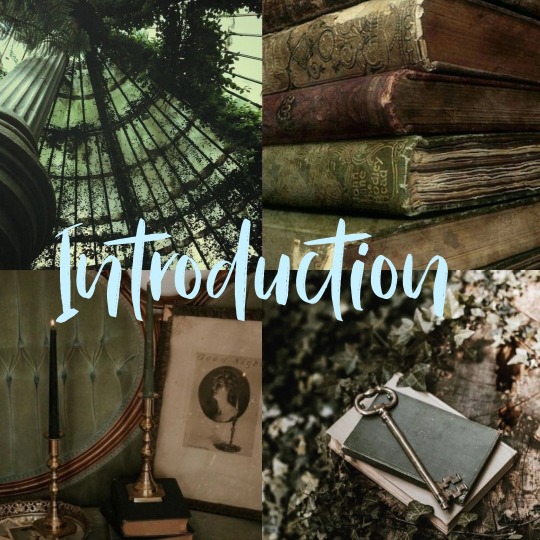
Hey studyblr people!!
About me:
Stars (She/they - please use both)
27, Desi, neurodivergent
Speak - Bengali, Hindi, English + Currently learning German (beginner)
Trying to apply for a PhD/second Masters in 2025/2026
Interests
whatever i hyperfixate on lol
books
fantasy/historical tv shows
plants
trying to learn to draw and write fics
Goals
I will be completely self-studying so I'm planning my own syllabus and doing my own courses from books and previous notes. The goal is to stay consistent and disciplined and try to minimise procrastination. Find out how and where to apply in the future and what requirements they have.
#Studyblr#studyblr introduction#studyblr intro post#bujoblr#bullet journal#studyblr community#study motivation#Stars_speaks
7 notes
·
View notes
Text
magandang umaga, o aking minamahal
read it on the AO3 at https://archiveofourown.org/works/60269746
by raifurucon
Mukhang nagmadali sila oo, ngunit tama bang hindi nila pinag-isipan ito? Paano kung may magsisi sa kanila sa huli... at biglang humantong sa wala ang lahat?
Words: 1830, Chapters: 1/1, Language: Filipino
Series: Part 2 of umaga't gabi
Fandoms: Team Fortress 2
Rating: Teen And Up Audiences
Warnings: No Archive Warnings Apply
Categories: M/M
Characters: Scout (Team Fortress 2), Spy (Team Fortress 2), RED Team (Team Fortress 2), BLU Team (Team Fortress 2)
Relationships: Scout/Spy (Team Fortress 2), Medic & Spy (Team Fortress 2)
Additional Tags: Angst, Angst and Feels, Character Study, Established Relationship, Self-Doubt, Self-Reflection, Incest, Parent/Child Incest, Scout Knows Spy Is Scout's Parent (Team Fortress 2), Mild Hurt/Comfort, I Wrote This Instead of Sleeping, Map: 2fort (Team Fortress 2)
read it on the AO3 at https://archiveofourown.org/works/60269746
2 notes
·
View notes
Text
Talking about one's self [Part 2]
In this series of posts, I'll be posting about some declarative statements that can be used when talking about one's self in a conversations or during self-introductions.
2) Expressing Likes and Desires
Expressing something that you already like as a declarative sentence and expressing something that you like or want to do as an intention (not yet done) is often expressed as "gusto" in Tagalog. It can both mean like and want.
Gusto ko / ko(ng)
Usually followed by a pronoun or an action word, to express desire to do something or express fondness/liking for a certain hobby. If the action word is in contemplative aspect, then it might be expressing desire to do something. If the action word is in imperfect aspect that implies it is regularly being done, then it might be expressing fondness or liking for a hobby or an activity.
Examples:
Hanga ako sa pamumuno ni Lea. Gusto ko siya maging kaibigan. (Trans: I admire Lea's leadership. I want her to be my friend.) "siya" is a pronoun referring to Lea
Gusto kong kumain ng Jollibee Chickenjoy. (Trans: I want to eat Jollibee Chickenjoy.)
Gusto kong makita mag-perform nang live ang Blackpink. (Literal: I want to see Blackpink perform live.) Both the action words "kumain" (to eat) and "makita" (to see/watch) are in contemplative aspect, therefore the speakers express desire to do those activities.
Gusto kong namamasyal sa probinsya tuwing bakasyon. (Trans: I like visiting and going around the province every time I stay for a vacation.) The action word "namamasyal" (to visit and stroll -- visiting and strolling) is in imperfect aspect, meaning that it is still being done, in the process of being completed, or is regularly happening ("tuwing" (every time...)). When translated to english, it becomes a noun in function.
Gusto kong maging...
This phrase literally means, "I want to become..." and it can be followed by a noun with or without a modifier.
Examples:
Gusto kong maging matagumpay na negosyante. (Trans: I want to become a successful entrepreneur.) "negosyante" means entrepreneur, which is a noun and modified by the adjective "matagumpay" which means successful
Gusto kong maging oncologist, 'pag nakatapos na ko ng pag-aaral. (Literal: I want to become an oncologist when I finish my studies.) oncologist is a noun that is specific to people
Gusto kong magkaroon ng...
This is the combination of has/have and expressing like statements. It translates to "I want to have..."
Examples:
Gusto kong magkaroon ng bag na Chanel. (Trans: I want to have a Chanel bag.)
Gusto kong magkaroon ng maraming pera! (Trans: I want to have lots of money!)
Note: In actual conversations, sometimes "magkaroon" is dropped and simply use the "Gusto kong..." or "Gusto ko ng..." since both phrases expresses for things or events that are still yet to happen or will happen in the future, which is also being implied in "Gusto kong magkaroon..." sentences. Example: both sentences above can also be stated as "Gusto ko ng bag na Chanel," and "Gusto ko ng maraming pera!" Although the desire to possess both things are not explicitly stated, the speaker's meaning is left to be interpreted based on the context of conversation.
Gusto ko si ____ / ng ____
Usually followed by nouns. "Si" is followed by proper pronouns especially if a name of a person, while "ng" is usually followed by common or abstract nouns.
Examples:
Gusto ko si Ben dahil hindi siya nagsasabi ng mga birong sexist. (Literal: I like Ben because he doesn't tell sexist jokes.) "Ben" is a name of a person. "Si" becomes a marker for a proper noun.
Gusto ko ng sariling bahay para magkaroon na ko ng privacy. (Literal: I want my own house for me to have privacy.) "Bahay" is a common noun or object meaning house, while the word "sarili" is a modifer that means my own or mine.
Additional notes:
Most of the ko pronouns used can be substituted by other pronouns like mo, ninyo, niya, nila, natin, and namin.
Pay attention to how si and ng are used to be familiarized with these
#learn tagalog#tagalog langblr#filipino langblr#learn filipino#philippine culture#pinoy culture#authors#language study#filipino grammar#tagalog grammar#tagalog native speaker#how to speak tagalog
18 notes
·
View notes